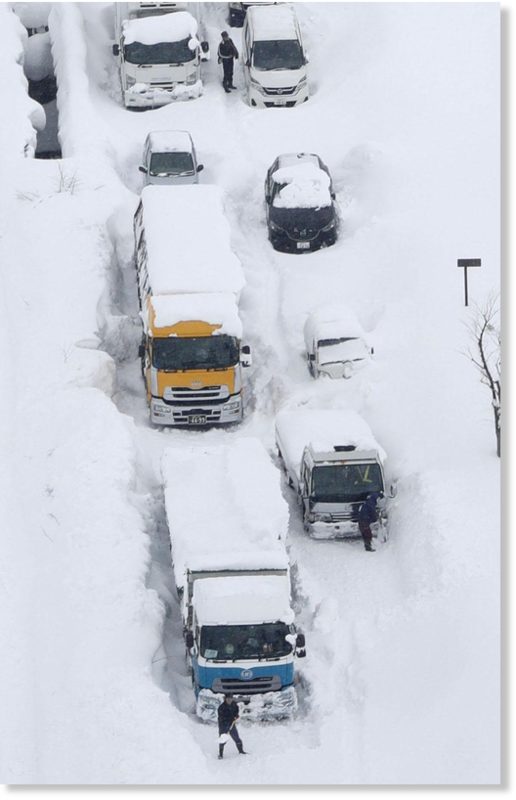
The average temperature was more than 2C below usual and the conditions at times were extreme.
On February 6, more than 1,000 vehicles were stranded by heavy snow in the Fukui Prefecture in western Honshu. Those stuck had to be dug out by the military.
After a meeting on Monday, Japan's Meteorological Agency declared that La Nina was to blame for the abnormal weather.
Comment: So, when it is extreme cold, La Nina caused it, when it is extreme heat, it is global warming?
La Nina is also likely to have triggered the current flooding in Queensland, Australia
A slow-moving area of low pressure has caused torrential rain in western Queensland, which has remained across the region for the last week.
Some parts of the state have reported as much as 400mm of rain, far exceeding the monthly average of 50mm.
The town of Winton received more rain in the last three days than the past year. A total of 228mm of rain was recorded in 72 hours up to 9am on Tuesday, but in the previous 12 months, only 120mm fell.
This wet weather is typical of La Nina, which usually brings increased rainfall in eastern and northern Australia. Despite the flooding it has caused, the rain is very welcome because many parts of Queensland are currently in the grip of a drought.
Other countries are also on alert for disruptive weather.
Meteorologists in Thailand are warning that the rainy season is likely to start earlier than usual and is expected to bring above average rain.
Some are even predicting that this season could be similar to that of 1995, which was the wettest in Thailand's history.
India and the eastern half of Southern Africa are other locations which could be in line for more rain than usual.
La Nina often brings an above-average Indian monsoon, whereas more rain in drought-hit Southern Africa could turn out to be life-saving.
La Nina conditions are likely to ease between March and May, but the effect on the global weather could well linger for a few extra months.



Reader Comments
to our Newsletter